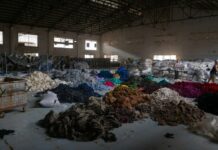European textile and clothing imports experienced a notable increase, with a 14% rise recorded in January 2025 compared to the same month the previous year, reaching €16 billion. This growth is attributed to several factors, including higher demand, supply chain adjustments, and an overall recovery in consumer spending.
The surge in imports was particularly significant in the clothing sector, which alone saw a 16% increase to approximately €10 billion. The textile sector followed suit, with imports growing by 11%, amounting to around €6 billion. This rebound marks a significant shift after a challenging period characterized by supply chain disruptions and fluctuating consumer behavior.
Countries in Asia remained the primary suppliers of textiles and clothing to Europe, accounting for over 60% of total imports. Notably, China continues to dominate the market, although other countries like Bangladesh, Turkey, and Vietnam have also increased their export volumes to Europe.
The European apparel market has shown resilience, with consumers increasingly seeking out sustainable and ethically produced clothing. This trend has prompted retailers to adapt their sourcing strategies, focusing on transparency and sustainability in their supply chains.
Trade experts anticipate that this upward trend in imports will continue, driven by ongoing improvements in the global supply chain and a resurgence in consumer confidence. However, challenges remain, including potential regulatory changes and economic uncertainties that could impact future growth.
In summary, the early months of 2025 have brought a significant boost to European textile and clothing imports, signaling a recovery in the market and a shift toward more sustainable sourcing practices.



































